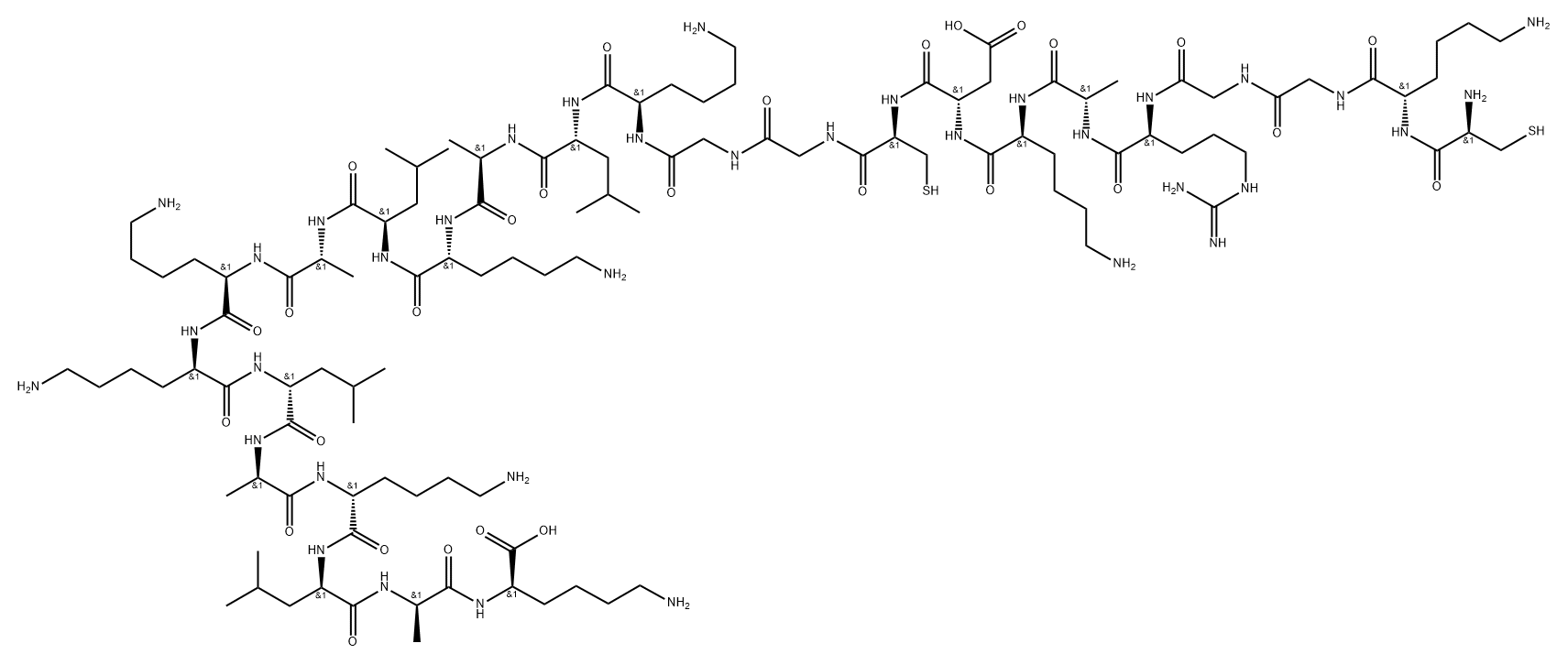HKPao (Hunter-killer peptide ao) is a biologically active peptide. HKPao (Hunter-killer peptide ao) has anti-obesity and anti-tumor pro-apoptotic activity to cause release of cytochrome c from vesicles.
Hunter killer peptides (HKPs) use receptor interactions as a vehicle for intracellular delivery and have been reported for targeting angiogenic tumor vasculature, white adipose tissue, and arthritic tissue. These pro-apoptotic peptides contain a variable amino terminal homing sequence, which mediates interactions with cell surface receptors, and a common positively charged carboxyl terminal apoptosis sequence motif that is connected through a glycinyl glycine linker. Once inside the cell, the peptide initiates apoptosis through a membrane perturbing interaction with the mitochondria. The apoptotic sequence is comprised of D-amino acids to increase the in vivo stability.
The amino acids of the pro-apoptotic sequence of HKP1 and HKPao have D-stereochemical configuration and are shown in lower case letters. HKP1 and HKPao can induce leakage of fluorescent dextrans from vesicles that have a larger hydrodyanmic radius than cytochrome c. Similar size dependence profiles suggest that the size of the transient pores formed by both these peptides are the same[1].
The peptidomimetic CKGGRAKDC-GG-D(KLAKLAK)2, referred to as adipotide, targeted the vasculature of white adipose tissue and resulted in ~30% weight reduction in obese mice over 4 weeks[2]. Therefore, unlike nonspecific angiogenesis inhibitors, adipotide is systemically targeted to the endothelium of fat through a ligand-directed mechanism and disrupts the vascular supply of white adipose tissue, at least in rodent obesity models. Moreover, an annexin A2–prohibitin receptor system targeted by adipotide has been reported recently in the white adipose tissue vasculature of human patients. Adipotide was designed to attach to the blood vessels that feed the body’s fat deposits. Then, it attacks them, causing them to wither and die. Apparently robbed of much of their blood supply, fat deposits respond by shedding fat cells.
HKPao can induce leakage of fluorescent dextrans from vesicles that have a larger hydrodyanmic radius.
[1] Cristina M. Sandoval. “Anti-obesity and anti-tumor pro-apoptotic peptides are sufficient to cause release of cytochrome c from vesicles.” FEBS Letters 581 28 (2007): Pages 5464-5468.
[2] Kirstin F. Barnhart. “A Peptidomimetic Targeting White Fat Causes Weight Loss and Improved Insulin Resistance in Obese Monkeys.” Science Translational Medicine 3 108 (2011).

